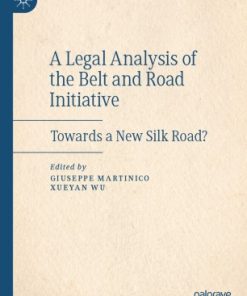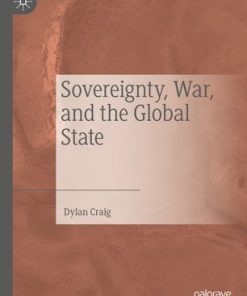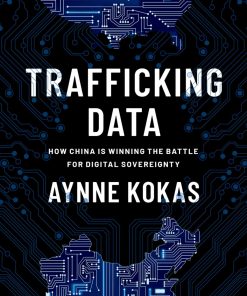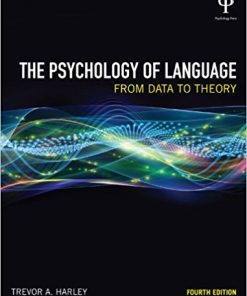(Ebook PDF) Data Sovereignty From the Digital Silk Road to the Return of the State 1st edition by Anupam Chander, Haochen Sun ISBN 9780197582817 0197582818 full chapters
$50.00 Original price was: $50.00.$25.00Current price is: $25.00.
(Ebook PDF) Data Sovereignty: From the Digital Silk Road to the Return of the State 1st edition by Anupam Chander, Haochen Sun-Ebook PDF Instant Download/Delivery:9780197582817, 0197582818
Instant download Full Chapter of Data Sovereignty: From the Digital Silk Road to the Return of the State 1st edition after payment
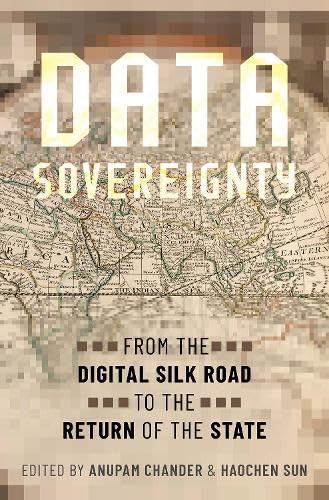
Product details:
ISBN 10:0197582818
ISBN 13:9780197582817
Author: Anupam Chander; Haochen Sun
Who, if anyone, should regulate the internet? Governments around the world have answered this question robustly: they will. Data sovereignty-the exercise of control over the internet-is the ambition of world leaders as a natural extension of traditional sovereignty and as a bulwark against the reach of foreign power. The question posed to governments now is not who should regulate the internet, but how should it be done.
Data Sovereignty: From the Digital Silk Road to the Return of the State focuses on the question of territorial control over data flows and attempts by national and regional governments to place limits on the free movement of data across a global internet. Drawing on theories in political economy, international law, human rights, and data protection, this volume offers new theoretical perspectives and thought-provoking ideas about the nature and scope of data sovereignty. It examines the extent to which new technologies, such as artificial intelligence, robotics, and automation, pose challenges to data sovereignty and how those challenges might be addressed. In chapters that are both descriptively comprehensive and analytically rich, the book explains the national, regional, and international legal frameworks for regulating the digital economy.
Professors Anupam Chander and Haochen Sun have assembled a distinguished team of experts across multiple fields to address the promise and pitfalls of data sovereignty in the context of trade liberalization, data localization, and human rights protection. In a world that is still grappling with the scope of the internet, Data Sovereignty offers a timely and thorough investigation of the ongoing conflict between the state and the internet. This is an open access title available under the terms of a CC BY-NC-ND 4.0 International licence. It is free to read on Oxford Scholarship Online and offered as a free PDF download from OUP and selected open access locations.
Table of Contents:
- Introduction: Sovereignty 2.0
- I. Defining Digital Sovereignty
- II. The Rise of Digital Sovereignty
- A. China: Inventing Digital Sovereignty
- B. The EU: Embracing Digital Sovereignty
- C. Russia: Promoting the Runet
- D. The United States: Digital Sovereignty by Default
- E. The Global South: Avoiding Data Colonialism
- III. How Digital Sovereignty Is Different
- A. Always Global
- B. Against Corporations
- C. More Control
- D. Enables Protectionism
- IV. Digital Sovereignty and the Russian Invasion of Ukraine
- V. The Plan for This Volume
- Part I Retheorizing Digital Sovereignty
- 1. Two Visions for Data Governance: Territorial vs. Functional Sovereignty
- I. Introducing Functional Sovereignty
- II. Asserting Functional Sovereignty
- III. Conclusion
- 2. A Starting Point for Re-thinking “Sovereignty” for the Online Environment
- I. Introduction
- II. The Point of Departure: Sovereignty Applies Online, but How?
- III. Three Examples Showcasing the Messy State of Sovereignty
- A. Sovereignty and Law Enforcement Access to Data
- B. Sovereignty and Content Removal Orders
- C. Sovereignty and Peacetime Cyber Espionage
- IV. Sovereignty and the Four Functions of International Law
- V. The Binary Nature of the Current Concept of Sovereignty
- VI. Sovereignty = “State” + “Exclusiveness”?
- VII. Sovereignty— Rule or Principle?
- VIII. “State Dignity”—the Core of Sovereignty
- A. Sovereignty Anchored in State Dignity—A Brief Illustration
- IX. Digital/Data Sovereignty—Political Slogan or Anchored in International Law?
- X. Concluding Remarks
- 3. Digital Sovereignty as Double-Edged Sword
- I. Introduction
- II. What Is Digital Sovereignty For?
- III. The Double-Edged Sword of Digital Sovereignty
- A. Speech
- B. Privacy
- C. National Security
- IV. Conclusion
- 4. From Data Subjects to Data Sovereigns: Addressing the Limits of Data Privacy in the Digital Era
- I. Introduction
- II. Data Subjects vs. Data Sovereigns
- III. Data Privacy in the Time of Pandemic
- A. The Challenge of Non-Personalized Data
- B. From Tracking the Pandemic to Tracking Individuals
- C. The Illusory Promise of Consent
- IV. Beyond Privacy: From Data Subjects to Data Sovereigns
- V. Conclusion
- Part II Technology and Economic Institutions
- 5. Digital Sovereignty + Artificial Intelligence
- I. Introduction
- II. How Digital Sovereignty Might Influence AI
- A. Three Models
- B. Implications
- III. How AI Might Influence Digital Sovereignty?
- A. Three Models
- B. Implications
- IV. Key Variables
- A. Access to Training Data
- B. Industrial Policy
- C. National Laws and Norms
- D. Attitudes toward AI-Powered Machines
- V. Conclusion
- 6. Taobao, Federalism, and the Emergence of Law, Chinese Style
- I. Introduction
- II. Development and Legal Market Infrastructure
- III. Federalism, Chinese Style: Delegation and the Origins of Chinese Political and Economic Reform, 1981–1993
- IV. Taobao and Law, Chinese Style
- A. Evolution of Law, Chinese Style
- B. Taobao Creates a Market
- C. Taobao’s Private Legal System
- V. Taobao and the Evolution of Federalism, Chinese Style: Recentralization
- A. Decentralization and the Incomplete Common Market
- B. Taobao and the Formation of a Common Market
- C. Taobao and Recentralization
- VI. Conclusion
- 7. Leveling the Playing Field between Sharing Platforms and Industry Incumbents: Good Regulatory Practices?
- I. Introduction: Increasing Regulatory Fragmentation
- II. A Case Study: Regulating the Sharing Economy and Its “Enemies”
- A. Innovation: The Sharing Platforms
- B. Competition: The Incumbents
- C. Regulation: Dynamic and Divergent Approaches
- III. Regulatory Cooperation on Platform Regulations: Good Regulatory Practices?
- A. Regulatory Cooperation Trends in the Regional Trade Agreements
- B. Good Regulatory Practices for Platform Regulations?
- IV. Conclusion: Regulatory Cooperation and Sovereignty
- 8. The Emergence of Financial Data Governance and the Challenge of Financial Data Sovereignty
- I. Introduction
- II. The Datafication of Finance
- III. Financial Data Governance and General Data Governance
- A. Regulating Financial Data
- B. The Evolution of Data Governance Styles
- IV. Open Banking
- V. Financial Data Governance Strategies
- A. Property-Based: United States
- B. Rights-Based: European Union
- C. Shared Resource: China
- D. Hybrid Models
- VI. Financial Data Sovereignty: Localization vs. Globalization
- A. Regulatory Fragmentation
- B. Territorialization and Data Localization
- VII. The Data Sovereignty Challenge
- Part III Trade Regulation
- 9. Data Sovereignty and Trade Agreements: Three Digital Kingdoms
- I. Data Sovereignty
- II. Data Sovereignty and Trade Agreements
- III. United States: The Firm Sovereignty Model
- A. Firm Sovereignty
- B. Privacy as a Consumer Right
- C. Security as a Business Risk
- D. Trade Agreements
- IV. China: The State Sovereignty Model
- A. Data Sovereignty
- B. Trade Agreements
- C. Personal Information Protection
- D. “Important Data” and “Core Data”
- V. EU: The Individual Sovereignty Model
- A. The GDPR
- B. Digital Sovereignty
- C. Data Flow and Localization
- D. Trade Agreements
- VI. Why the Differences?
- VII. Conclusion
- 10. Data Governance and Digital Trade in India: Losing Sight of the Forest for the Trees?
- I. Introduction
- II. Data Governance in India: Multiple Narratives, Multiple Frameworks
- A. Underlying Ideas of Data Governance
- B. Policy Goals in Data Governance Instruments
- C. The “Data Governance Complex” in India
- III. Data Governance and Influences on Digital Trade Policies in India
- A. The Nexus of Data Governance and Digital Trade
- B. Digital Trade Policies Reinforce the Data Governance Complex
- C. India in the Global Digital Trade Framework
- IV. Conclusion
- 11. Creating Data Flow Rules through Preferential Trade Agreements
- I. Introduction
- II. Digital Trade Provisions in PTAs
- A. Developments over Time
- B. Overview of Data-Related Rules in PTAs
- III. Different PTA Templates for Digital Trade Governance
- A. The U.S. Template
- B. The Digital Trade Agreements of the European Union
- C. The RCEP
- IV. Conclusion
- Part IV Data Localization
- 12. Personal Data Localization and Sovereignty along Asia’s New Silk Roads
- I. Types of “Data Sovereignty” and “Data Localization”
- II. China, Russia, and Near Neighbors on the New Silk Roads
- A. China’s Data Localizations
- B. Russia’s Data Localizations
- C. Comparison of Chinese and Russian Localizations
- III. South Asia: Three Bills Include Localizations
- A. Regional Agreements
- B. India
- C. Sri Lanka
- D. Pakistan
- E. Comparison of South Asian Provisions
- IV. Central Asia: Five Laws Include Some Localizations
- A. International and Regional Agreements
- B. Data Localization Measures in National Laws
- C. Local Processing and Storage (Loc #1 and #2)
- D. Data Export Conditions and Prohibitions (Loc #3 and #4)
- E. Extraterritoriality and Local Representation (Loc #5 and #6)
- F. “Outsourcing Exemptions”
- G. Comparison of Central Asian Provisions
- V. How Relevant Are Free Trade Agreements?
- A. Adequacy and the GATS
- B. The Comprehensive and Progressive Agreement for Trans-Pacific Partnership (CPTPP)
- C. The Regional Comprehensive Economic Partnership (RCEP)
- D. FTAs and the Future of Data Localization
- VI. Conclusion
- 13. Lessons from Internet Shutdowns Jurisprudence for Data Localization
- I. Motivations of Data Localization
- A. Cybersecurity—Protection (Control) of Domestic People
- B. Nurturing Domestic Digital Players and Tax Revenues
- II. Trade Rules Applied to Data Localizations
- A. Applicability of Trade Rules
- B. Trade-Rules-Based Arguments against Data Localization
- III. Regulating Internet Shutdowns through Human Rights Norms
- A. United Nations
- B. UN Special Rapporteurs on Freedom of Expressions
- C. Joint Declarations of Special Rapporteurs on Freedom of Expression
- D. Europe
- E. Turkish Domestic Courts
- F. Americas
- G. Brazil Domestic Courts
- H. Africa
- I. Asia
- IV. Adaptation of the Internet Shutdown Jurisprudence for Data Localization
- A. Synthesis of Jurisprudence on Internet Shutdowns
- B. Adaptation to Data Localization
- V. Conclusion
- 14. European Digital Sovereignty, Data Protection, and the Push toward Data Localization
- I. The Push Toward Data Localization in Europe
- II. The Need to Better Understand the Reasons behind Calls for Data Localization
- III. The Influence of the Schrems II Judgment of the CJEU
- A. The Starting Point: Data Localization Is Not in the GDPR’s DNA
- B. Calls for Data Localization After Schrems II
- C. Initial EDPB Guidance: Toward De Facto Data Localization
- D. The New Model SCC’s and EDPB’s Final Guidance: A Degree of Room for a Risk-Based Approach?
- E. Intensification of Enforcement of Schrems II by European DPAs and Rejection of a Risk-Based Approach
- IV. Conclusion
People also search:
which of the following relates to the term data sovereignty
indigenous data sovereignty canada
aws data sovereignty
indigenous data sovereignty australia
which of the following is not true about data sovereignty
Tags:
Anupam Chander,Haochen Sun,Data Sovereignty,Digital Silk,Return of the State
You may also like…
Politics & Philosophy
Commercial & Financial Law
Politics & Philosophy - Government & Politics
The Prequel to China’s New Silk Road: Preparing the Ground in Central Asia 1st ed. 2020 Edition
Politics & Philosophy - International Relations
Sovereignty, War, and the Global State 1st Edition Dylan Craig
History - World History
Computers - Internet & World Wide Web
Trafficking Data: How China Is Winning the Battle for Digital Sovereignty 1st Edition Aynne Kokas
Jurisprudence & Law
History - World History
China and the Islamic World: How the New Silk Road is Transforming Global Politics





